Observing the technical virtuosity of this artist is quite astounding. In this exquisite portrait, as much attention has been paid to the sitter’s facial features as to the expensive fabrics. It is remarkable for the soft modelling of the face and the ingenious flourishes, such as the very fine eyelashes. The treatment of the sumptuous crimson wrap is superb but the pièce de résistance is the depiction of the lace cravat – it is amongst the finest depictions of lace that you will see and is the work of one of the best drapery painters of the day. It is interesting to acknowledge that these types of lace cravats were so expensive that even young men of fashion had only one or two at any one time (costing £5,000 each in today’s money, by some accounts).
By tradition the sitter is William Mellish (1708-1791), who inherited the Mellish family seat of Blyth. However, it is more plausible that the portrait represents his father, Joseph Mellish (1675-1733) and painted circa 1685. This is based on the style of portrait with the feigned oval and the sitter’s attire (the encompassing elaborate wrap, the style of elaborately worked lace cravat, the elbow-length coat sleeves, and the wide shirt sleeves underneath); these elements were fashionable circa 1685. Joseph Mellish would have been about 10 years of age which is congruous with the portrait.
The Mellish family were originally London merchants. In 1635 John Mellish of London purchased the Blyth estate in north Nottinghamshire. He was succeeded by his eldest son Edward Mellish, at one time merchant at Oporto, Portugal. Edward died unmarried in 1703 and left his estate at Blyth to our sitter, Joseph Mellish (1675-1733), the son of his cousin Samuel Mellish (1634-1707) and his second wife Joan.
Joseph was one of Newcastle’s earliest and most important political supporters in the county. He entered Cambridge College in 1692, and the Inner Temple the following year. He died in June 1733, aged 58, and was buried at Blyth. He married Dorothy or Dorothea Gore (1683-1738), daughter of Sir William Gore, Lord Mayor of London (d 1708), and had two daughters and four sons. His oldest son, Edward (1707-1757) inherited the family estates and these passed to his second son, William (1708-1791), who was MP for East Redford, upon the death of Edward. William sold a number of small estates in Nottinghamshire in the 1760’s and purchased Hodsock Priory in 1765.
Charles Mellish (1737-1797), the son of William Mellish, was interested in the history of Nottinghamshire and in antiquarian study. His son, Henry Francis Mellish, became Lieutenant Colonel and aide-de-camp to General Ferguson during the Peninsular War. He sold the Blyth estate in 1806 and Hodsock (Hodsock Priory) became the main family residence.
On his death in 1817 the Hodsock estate passed to his sister and co-heir Anne (1781-1855), who had married William Cecil Chambers in 1811. The latter also died in 1817. The sons of William Cecil and Anne Chambers, William Mellish and Charles Henry Chambers, died in 1845 and 1840 respectively.
On Anne's death in 1855, the estates passed to her cousin, William Leigh Mellish (1813-1864), the son of Edward Mellish, Dean of Hereford (1767-1830). Colonel Henry Mellish (1856-1927), the son of William Leigh, was the last male representative of the family to live at Hodsock.
William Leigh Mellish's sister Frances Katharine married the diplomat Sir Andrew Buchanan (1807-1882). In 1935 the last Mellish sister died and Hodsock passed to Sir Andrew Buchanan's grand-daughter Mrs Mary Constance Mayhew (1901-1982), and thence to its current owner, Sir Andrew Buchanan, 5th Baronet.
The descent of the main estates was as follows:
Edward Mellish (d 1626)
His son John Mellish (1597-1677), purchased the Blyth Hall estate
His son Edward Mellish (1633-1703)
His cousin's son Joseph Mellish (1675-1733)
His son Edward Mellish (1707-1757)
His brother William Mellish (1708-1791), purchased Hodsock Priory
His son Charles Mellish (1737-1797)
His son Lt Colonel Henry Francis Mellish (1782-1817), sold Blyth Hall
His sister Anne Chambers, née Mellish (1781-1855)
Her cousin William Leigh Mellish (1813-1864)
His son Colonel Henry Mellish (1856-1927)
His cousin Mary Constance Victoria Mayhew (1901-1982), sister of Charles James Buchanan, 4th Baronet (1899-1984)
Her nephew Sir Andrew George Buchanan, 5th Baronet (1937-)
Blyth Hall - The site of Blyth Priory was abandoned after the dissolution of the monasteries, and passed to the Saunderson family. Blyth Hall is thought to have been converted from the Abbey buildings in the mid-sixteenth century, and was purchased by John Mellish (d 1677). His son Edward, a merchant in Portugal, returned to England in 1671 and in 1684 commissioned the demolition of the old priory which was built in 1088 and one of the oldest examples of Norman architecture in the country. It remained the Mellish family's principal residence until Lt Col. Henry Francis Mellish (d 1817) sold it to Joshua Walker Esq. in 1806 to pay his gambling debts.
Hodsock Priory - Hodsock was owned through nine generations from the mid-twelfth century by the Cressy family. A moated manor house was in existence by 1250. The estate then passed to the Clifton family through marriage and remained in their hands for a further thirteen generations. The house was sold in 1765 to William Mellish (1708-1791) and used as a subsidiary residence to the main Mellish house, the nearby Blyth Hall. William's son Charles Mellish (1737-1797) improved the estate, but his son Lt Col. William Henry Mellish (d 1817) was a gambler, and sold Blyth Hall to pay his debts, upon which Hodsock became the family home. Hodsock was inherited by Colonel Mellish's sister Mrs Anne Chambers (d 1855).
The last Mellish owner of the house was Colonel Henry Mellish, who died in 1927. His two unmarried sisters continued to live in the house for the remainder of their lives. It passed in 1935 to a cousin, Mrs Mary Constance Mayhew (1901-1982), sister of Sir Charles James Buchanan, 4th Baronet (1899-1984). Mrs Mayhew and her family moved into Hodsock Priory in 1942 and in 1966 Mrs Mayhew's life interest was bought out Sir Andrew Buchanan, 5th Baronet, who continues to live at Hodsock Priory with his family.
Sir Godfrey Kneller (1646-1723) was born in Germany but trained in Amsterdam and studied in Italy before moving to England in 1676. Towards the end of the century, after the deaths of Peter Lely and John Riley, Kneller became the leading portrait painter in Britain and the court painter to English and British monarchs from Charles II to George I. He dominated English art for more than thirty years. His over 40 "Kit-cat portraits" and the ten "beauties" of the court of William III are most noteworthy.
Provenance: From the sitter and by direct descent within the family to Sir Andrew George Buchanan, 5th Baronet (born 1937) of Hodsock Priory, Nottinghamshire
Measurements: Height 96cm, Width 80cm framed (Height 37.75”, Width 31.5” framed)






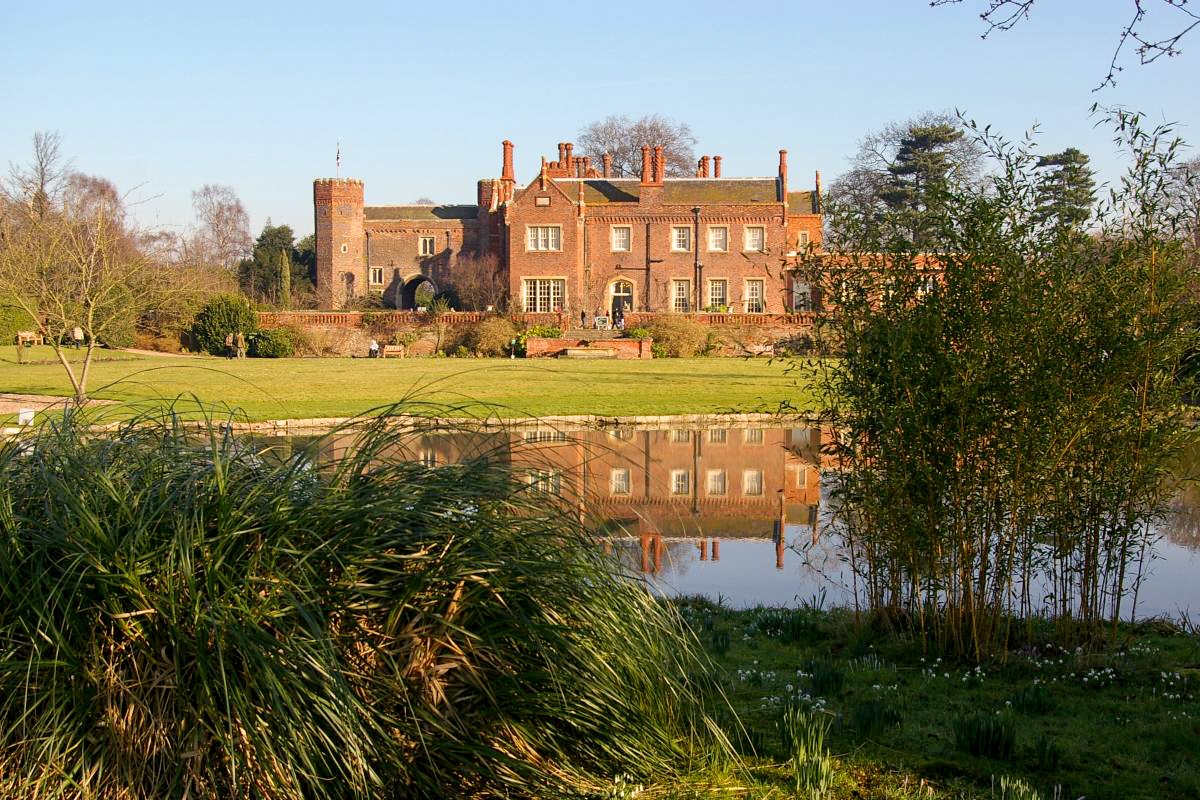
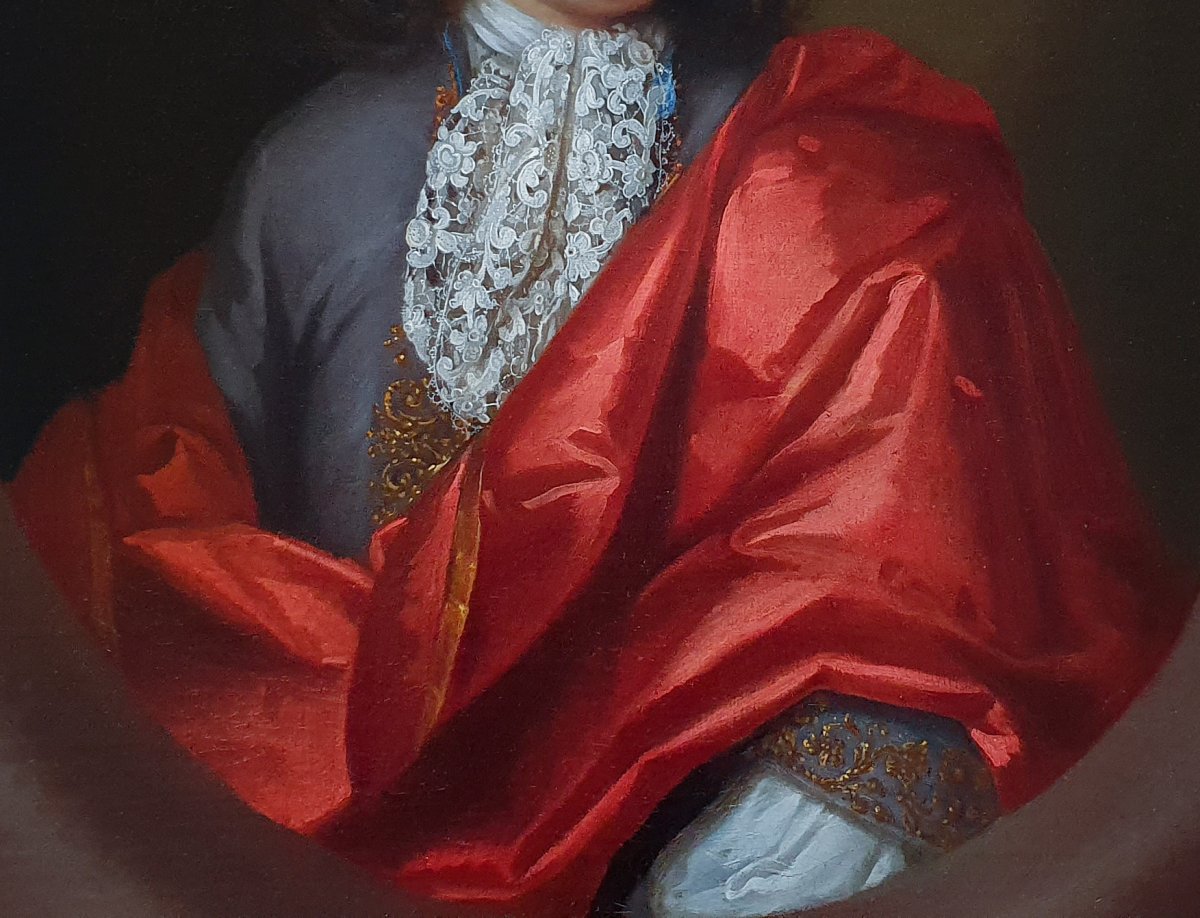

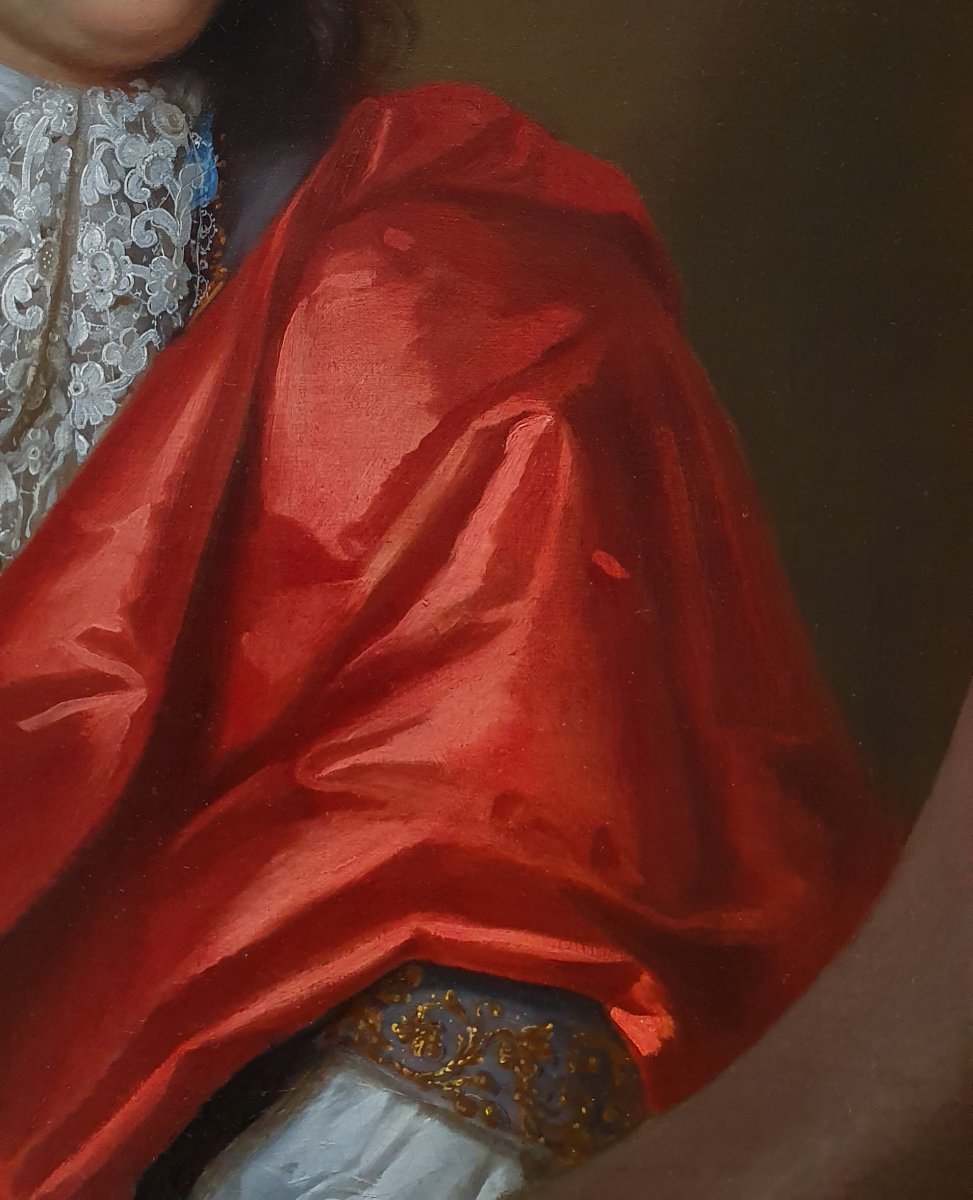
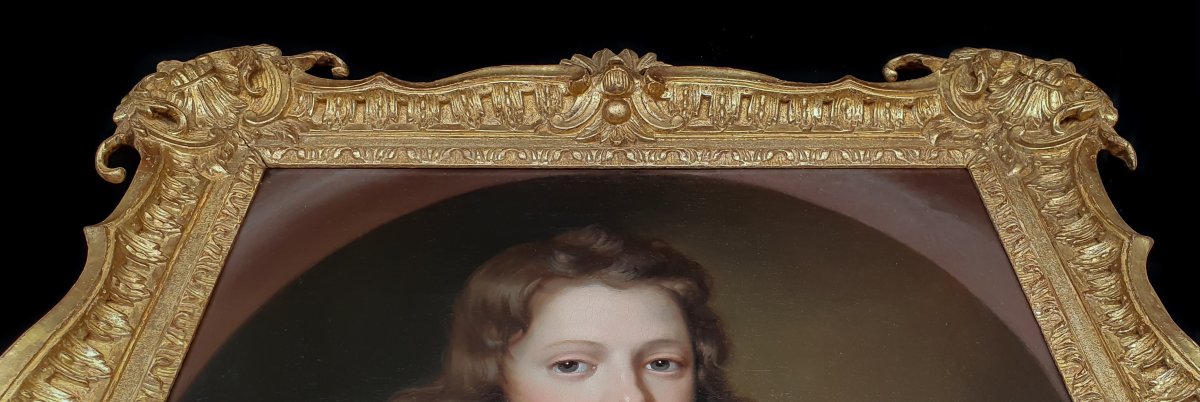
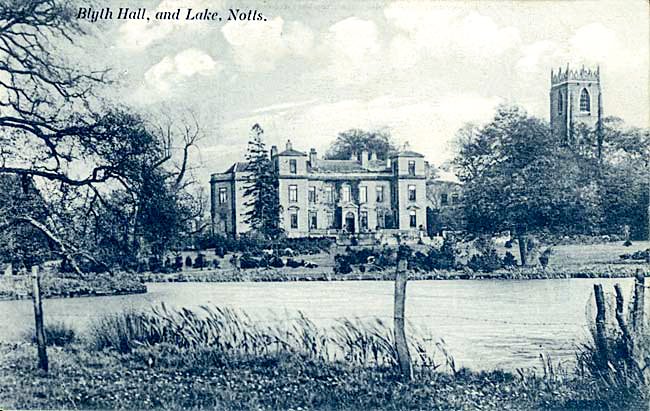





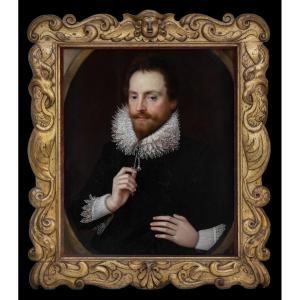

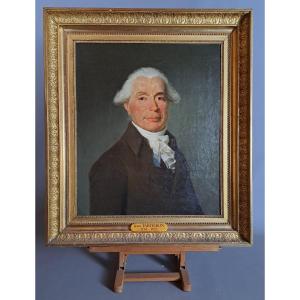
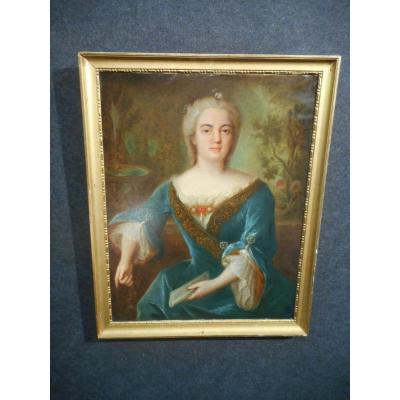






 Le Magazine de PROANTIC
Le Magazine de PROANTIC TRÉSORS Magazine
TRÉSORS Magazine Rivista Artiquariato
Rivista Artiquariato
